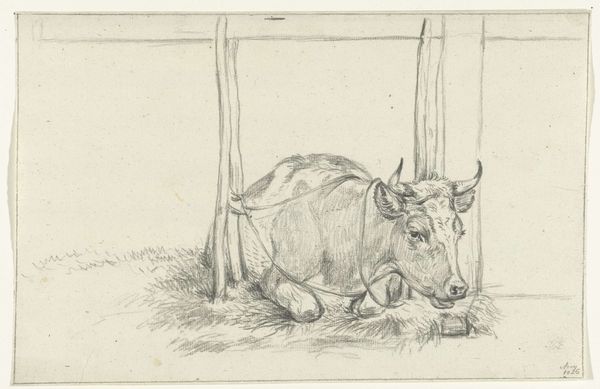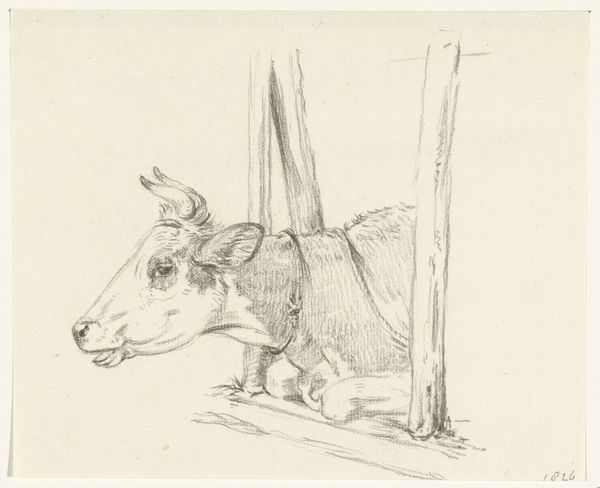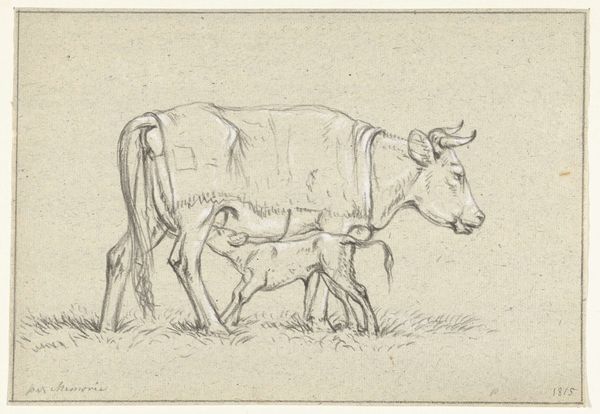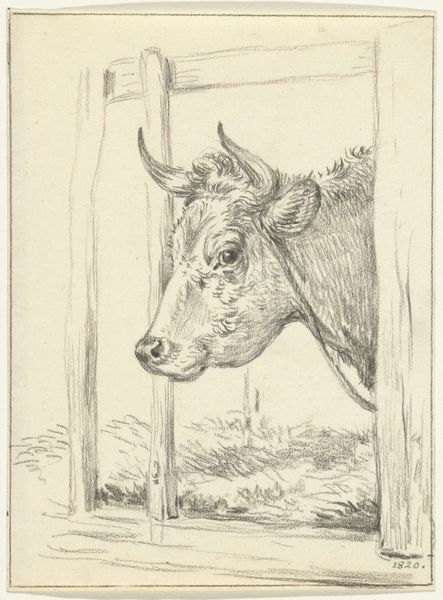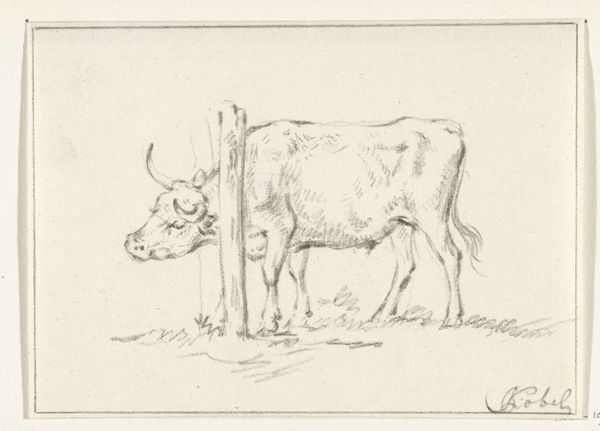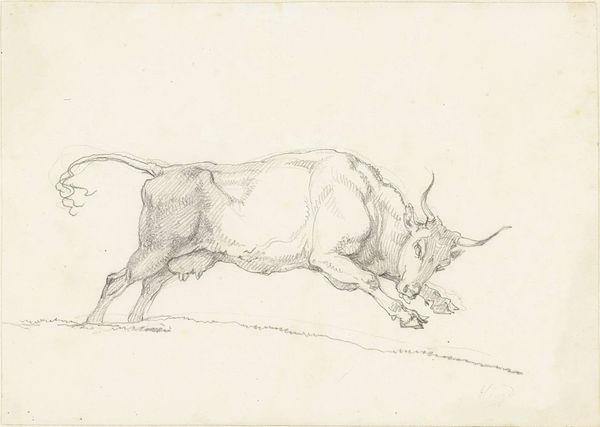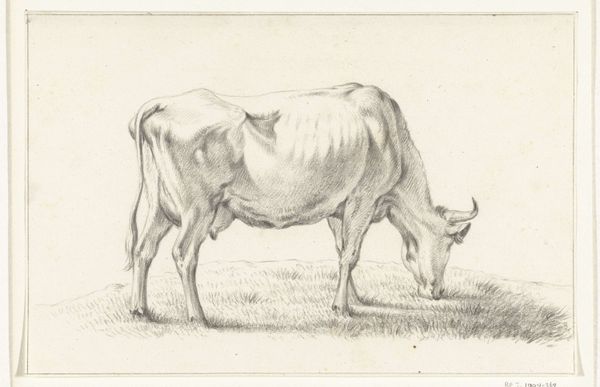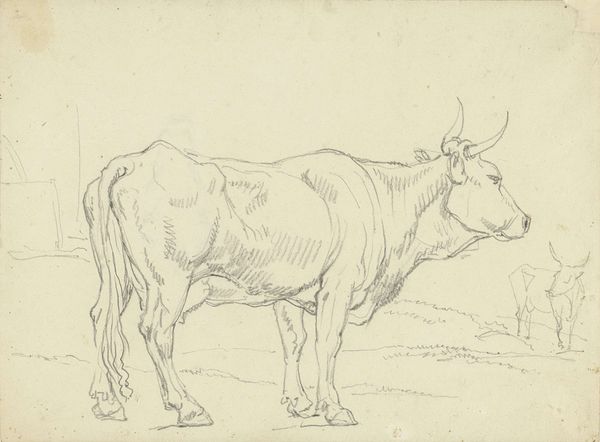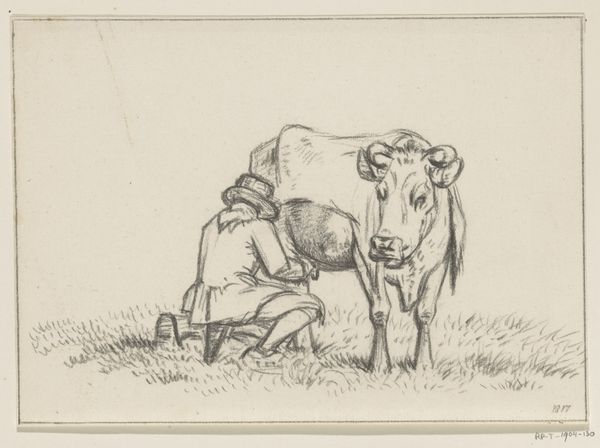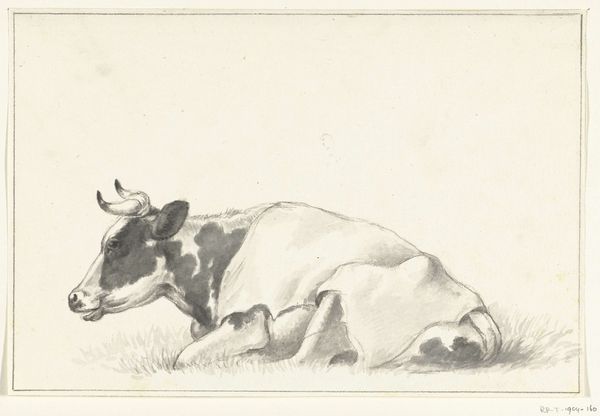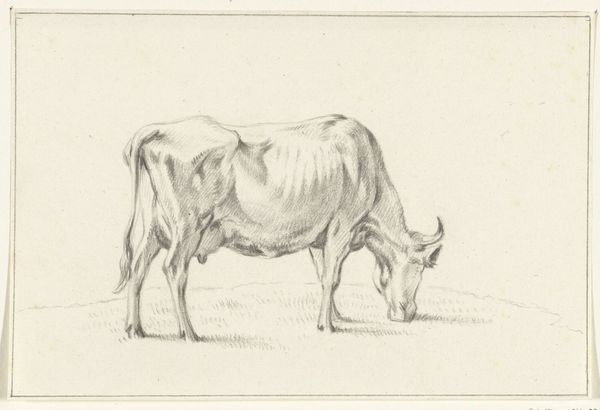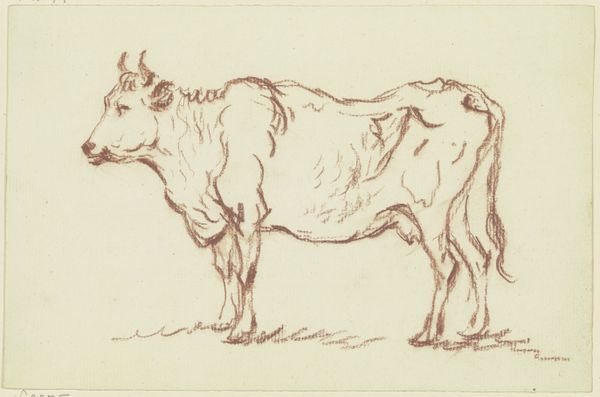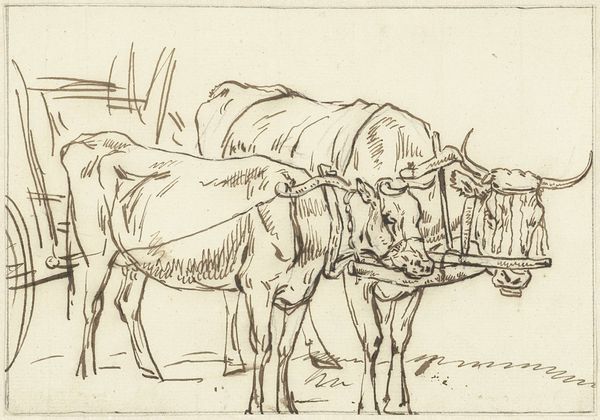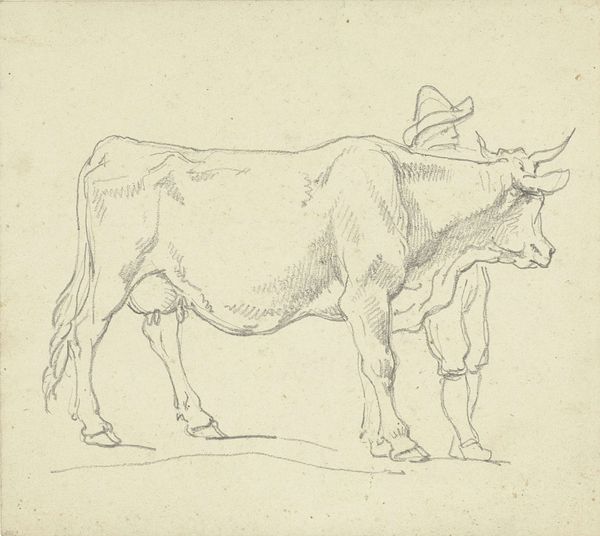
drawing, pencil, graphite
#
drawing
#
animal
#
pen sketch
#
landscape
#
pencil
#
graphite
#
sketchbook drawing
#
realism
Dimensions: height 203 mm, width 308 mm
Copyright: Rijks Museum: Open Domain
Curator: Here we have "Liggende koe in een stal, naar links" or "Lying cow in a stall, facing left", a drawing by Jean Bernard, dating from 1775 to 1833. It's currently held in the collection of the Rijksmuseum. Editor: There’s something immediately grounding about this sketch. It’s simple, almost stark. The cow, lying there amidst the hay, seems utterly at peace. Curator: Bernard, working in the late 18th and early 19th centuries, was deeply embedded in the artistic milieu that was shifting its focus to Realism and away from idealized landscapes. This drawing then reflects that shift— the quotidian rural life becomes an worthy subject for art. Editor: You can practically smell the hay, can’t you? It's interesting how the texture is built up with these dense pencil strokes, conveying the very physical nature of agricultural labour. I wonder, was this made in situ, reflecting how closely the artist may have related to this rural setting? Curator: It’s quite possible. Drawings like these, even if made in preparation for a larger painting, became valued objects in and of themselves as artistic authenticity increased its value and collectors showed interest. But also, consider the social implications. Drawings of rural life could be appreciated and consumed by urban audiences longing for connection with an idealized past. Editor: Yes, and to take that further, the material itself speaks volumes. The humble graphite, the plain paper – these are readily accessible materials that allow for democratic image production. The access to resources makes this kind of art something that speaks to and for wider society beyond elite tastes. Curator: That is quite accurate, this is about the availability and increasing valuation of the quotidian as source for national pride but it can also carry political weight, becoming a vehicle for broader discussions on social and economic inequalities. Editor: It almost seems sacrilegious to analyze this so academically, but this sort of artwork invites such interpretations, I think. Its honesty is beguiling. Curator: Exactly, the genius resides in that very simplicity but this is a deliberate construct designed to convey particular values and assumptions about a specific cultural and historical framework. Editor: Thank you for framing that in such an interesting way! The layering is so compelling.
Comments
No comments
Be the first to comment and join the conversation on the ultimate creative platform.
